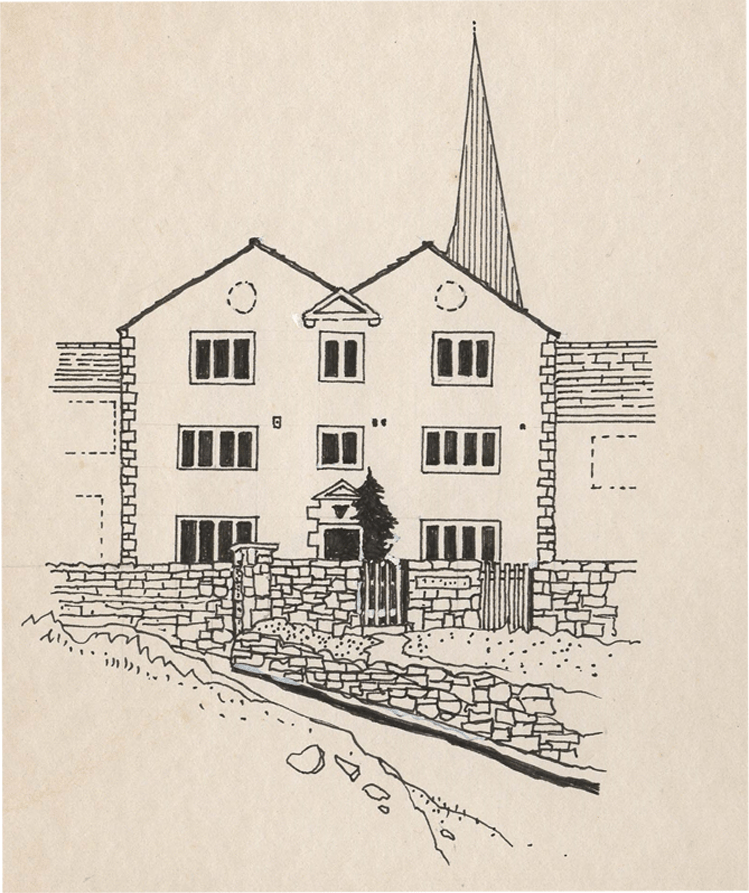
As the Crow Flies — Stop 3
Mr Pickles Visits Quickwood
Mr Pickles loved visiting Quick Manor and the cottages next door. He would spend hours perched on the stone sills looking through the windows.
 Illustration by children of Milton St John’s School
Illustration by children of Milton St John’s School
In Quick Manor he could see rich furnishings and beautiful ornaments amongst which a man and a woman were practicing lines for a play. In between they would hug and kiss because they loved each other so much. Mr. Pickles knew the lady was the daughter of the wealthy mill owner Mr Kenworthy who had built Quick Manor. She had fallen in love with her husband when he worked for her father. Mr Kenworthy hadn’t approved and it caused a great scandal when they had secretly eloped to Gretna Green. After that they had toured all over the country making their living as travelling players. Now old Mr Kenworthy had died so they had been able to come back to Mossley and live in Quick Manor.
When Mr Pickles got bored with hearing all those lines and all that kissing he moved to one of the many windows of the cottages next door. The inside of these was much less grand than Quick Manor but there was always lots going on.
The smaller children carded wool to make it smooth, then carried it to their mums and older sisters who spun it into a fine woollen thread. The spun wool was given to the men who wove it into cloth on their looms. They would sit close to the windows to make the most of the light until it was too dark to work. Then they lit candles to light their way to bed. As the last candle was blown out Mr Pickles tucked his head under his wing and slept in the eaves of the roof.

‘Roughtown’ refers to the fact that the ground was very rough and bumpy rather than that the residents were unruly!
Ancient woodland extended down the hill onto Manchester Road, near the Woodend Mill and Woodend pub. This area of woodland existed until the mid-1840s after which many trees were felled to make sleepers for the new railway line. Trees also provided fuel for cooking fires and temporary shelters for the workmen employed in the railway’s construction.